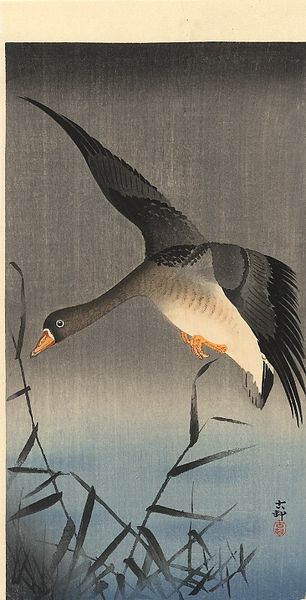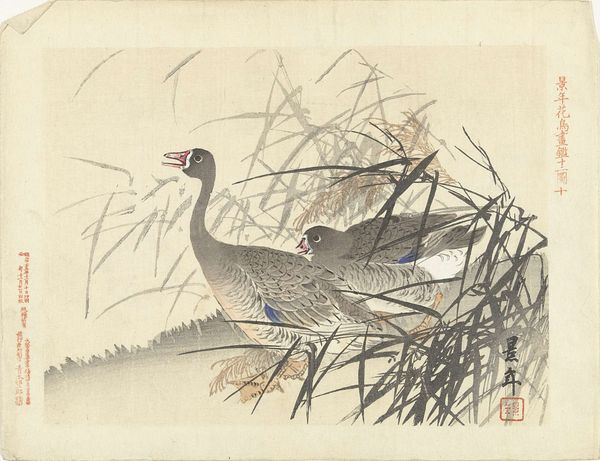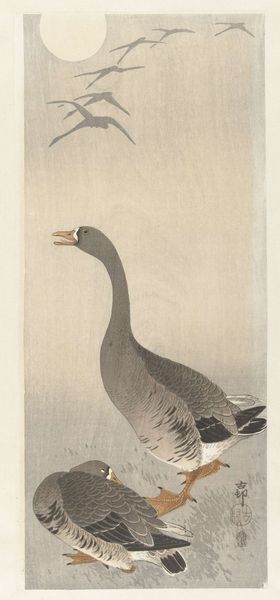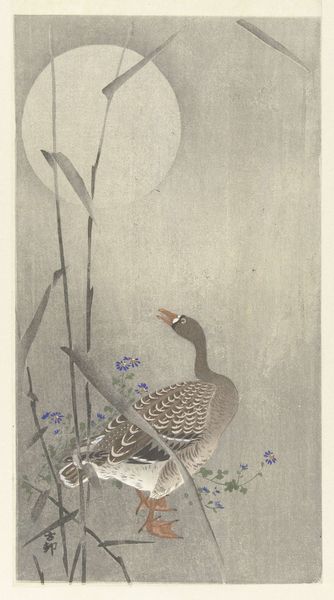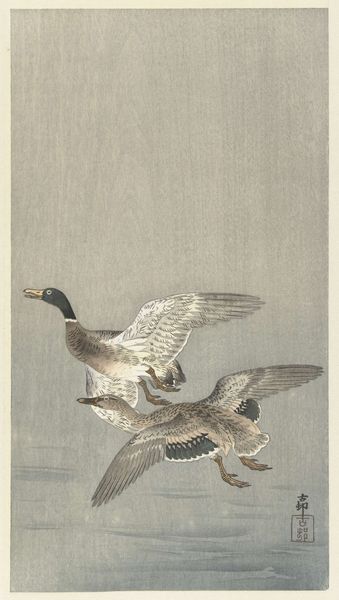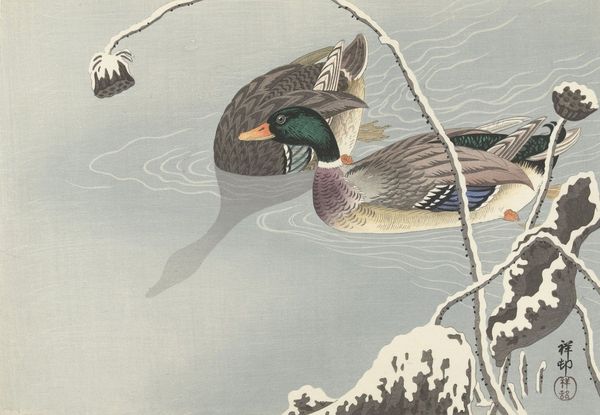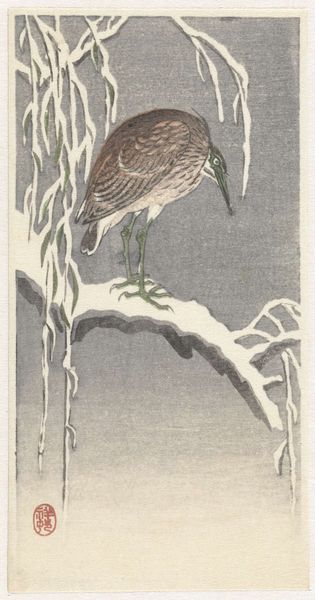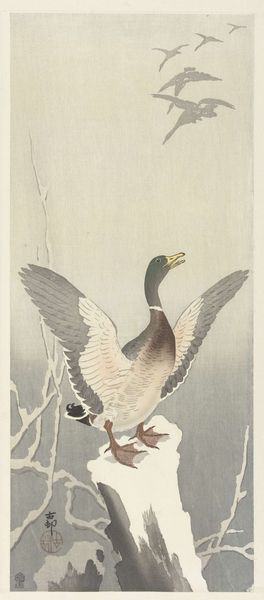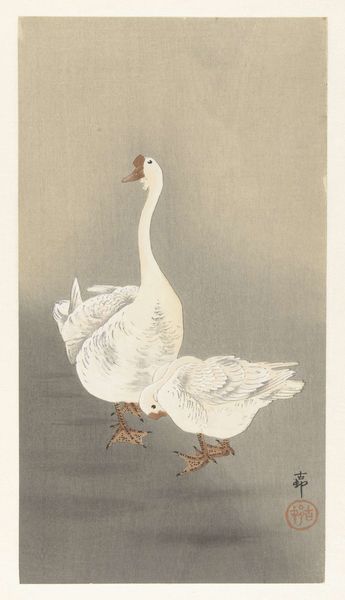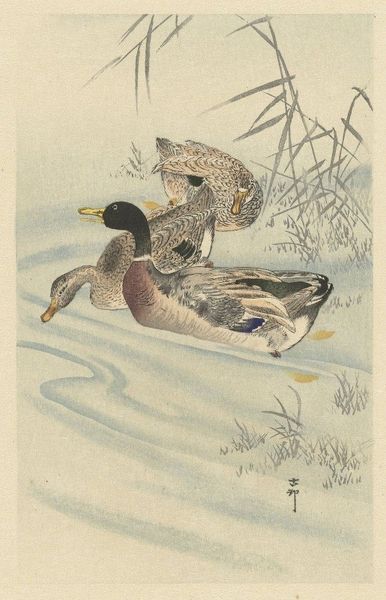
print, woodblock-print
# print
#
impressionism
#
asian-art
#
landscape
#
winter
#
bird
#
ukiyo-e
#
woodblock-print
#
water
Copyright: Public domain
Editor: This woodblock print, "Goose on the Snow" by Ohara Koson, really strikes me. The texture of the goose's feathers seems almost tangible against the smooth, gray background. What draws your eye when you look at this piece? Curator: For me, it's about the materials and the process. The woodblock printmaking tradition itself speaks volumes about the intersection of art and craft. How does the labour involved in carving and printing these blocks inform our understanding of the image? We have to ask questions of the socio-economic system too - who was buying these prints, and how were they distributed? Were they luxury items, or accessible to a wider audience? The way that color is used, so economically, what does this restraint mean? Editor: That's fascinating! I hadn't considered the economic aspect. So, you're suggesting the materiality of the woodblock and the socio-economic system within which it exists really change the meaning? Curator: Precisely. It is very interesting to note the rise of ukiyo-e prints, and how artists began using materials, processes, and distribution methods that challenged traditional artistic boundaries and catered to an emerging merchant class. What materials were most available, affordable? That's a question we should be asking as art appreciators. Editor: So, it's not just about the goose, but the goose *and* the system that allowed this print to be created and consumed. Curator: Exactly. The image is intrinsically linked to its means of production and the society in which it circulates. Understanding these factors adds depth to our appreciation. It isn't the ‘timeless’ work so often considered by other scholars of the arts. Editor: I’ll definitely look at woodblock prints differently now. I appreciate this different take. Thank you! Curator: It’s essential to remember art never exists in a vacuum, and material conditions matter just as much as symbolic meaning!
Comments
No comments
Be the first to comment and join the conversation on the ultimate creative platform.
